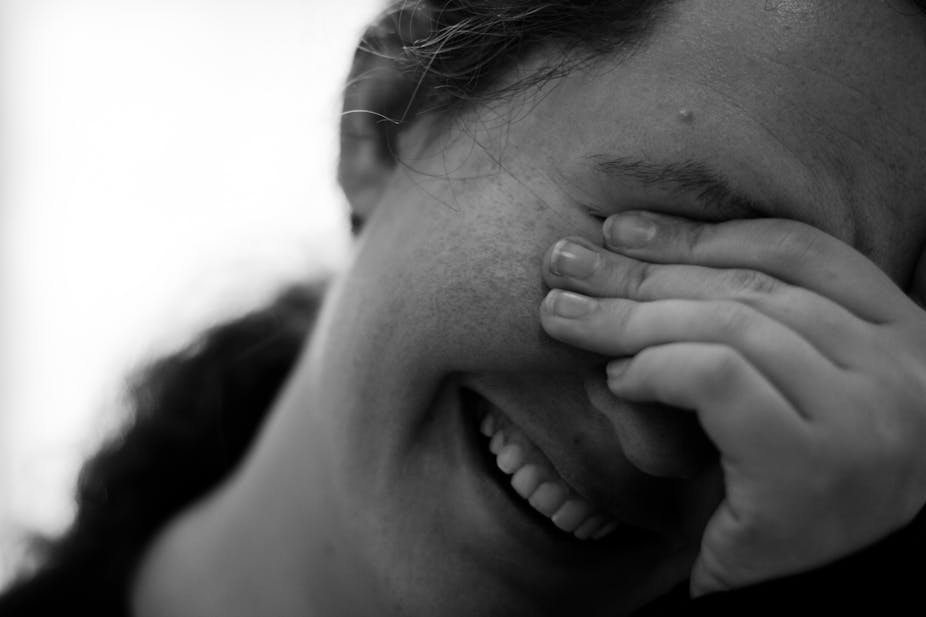Awkward and embarrassing, the human act of blushing raises many difficult psychological and physiological questions. Why should an emotional response take this particular form and does it serve any purpose? Signs of fear such as pallor, trembling and “butterflies in the stomach” seem to make sense in terms of the body’s preparation for action – but the utility of face reddening and increased skin temperature is not so evident.
Blushing seems to increase our visibility when we would least like to be seen. Making generalisations about its function is also made difficult by the fact that blushing is more noticeable on certain skin types. This raises the question of whether or not it is always the same or if there are distinct types, with different meanings. Scientific research is beginning to address these questions although there is still no consensus on answers.
A source of embarrassment
Where there does seem to be consensus is that most of us dislike our blushing. It is associated with unpleasant social predicaments, mental confusion and uncertainty over how to behave. It creates an impression of incompetence and lack of poise. The involuntary and uncontrollable nature of the blush contributes to a sense of being unable to cope.
In psychiatric diagnoses, fear of blushing is considered to be a symptom of social anxiety disorder. Many sufferers are prepared to undergo surgery on their sympathetic nervous system in order to prevent reddening – this involves cutting or clamping the nerve tissue that causes sweating and blushing. But this procedure can have unpleasant side effects such as compensatory sweating, as blushing is part of the body’s way of cooling itself down.
Benefits of blushing
But are we right to think of the blush in solely negative terms? This brings us back to the question of its function. Bodily reactions that give rise to unpleasant experiences can serve vital protective purposes, for example in the case of fear, shame or pain.
Social psychologists argue that embarrassment serves valuable social functions. At a societal level, it can prove a relatively painless means of enforcing social norms. As an unpleasant experience, we are keen to avoid it and this motivates us to regulate our own conduct without the necessity of externally imposed sanctions.
In specific encounters, a blush can allow participants to overcome temporary difficulties that might otherwise disrupt or dissolve relationships in the same way as a spontaneous and sincere verbal apology offered by someone at fault can forestall any aggression and enable the encounter to continue smoothly. And for individuals, by indicating to others their acknowledgement of social norms and willingness to adhere to them, outward signs of embarrassment can enhance their acceptability to the group.
From this perspective, if there was no embarrassment, then aggression might result or social rejection – the shameless, brazen, “unblushing” person is not someone whose company we would necessarily seek out. Is this where the functions of the blush are to be found?
Betraying innocence
Research shows that participants who are seen to blush after having infringed a social norm, for example by knocking over a pile of cans in a supermarket, tend to be judged less harshly than those who carry out the same action but do not blush. A visible blush seems to enhance the observer’s impression that the blusher is ashamed, embarrassed and concerned about others’ good opinion – indeed, the inadvertent nature of the blush may contribute to this judgement.
Yet this is not always the case. Research carried out by Peter de Jong and colleagues in The Netherlands finds that in ambiguous circumstances, where people’s motives are unclear – for example they cannot produce a ticket when the collector requests it – their blush tends to be perceived as a sign of guilt and they are not viewed more positively. Clearly the social context influences observers’ interpretations of reddening.
My current research interest is in blushing in the absence of a transgression or mishap, notably when some cue induces anxiety that something is likely to be revealed about us that we would prefer not to become known. In these circumstances the blush might actually produce the predicament or negative judgements that we fear.
Evolutionary origins
Some theorists locate observations on blushing within an evolutionary framework. Evolutionary explanations of shame regard its expression and actions that accompany it – gaze aversion, shrinking posture, hiding, fleeing – as “appeasement displays”. These act as signals to dominant individuals that they aren’t posing a threat and accept a subordinate position in the group.
Appeasement displays are common among primates and the blush might be an equivalent in humans, serving as a nonverbal form of apology or offer of remediation. It can be all the more effective because the involuntary nature of the signal means that it will be judged as sincere.
We have no direct evidence for this and no indication whether the blush serves similar functions across cultures or among people of different skin types. Perhaps the transient unpleasantness of the blush is a price worth paying for the wider and longer-term benefits for society and indeed for the individual blusher.

